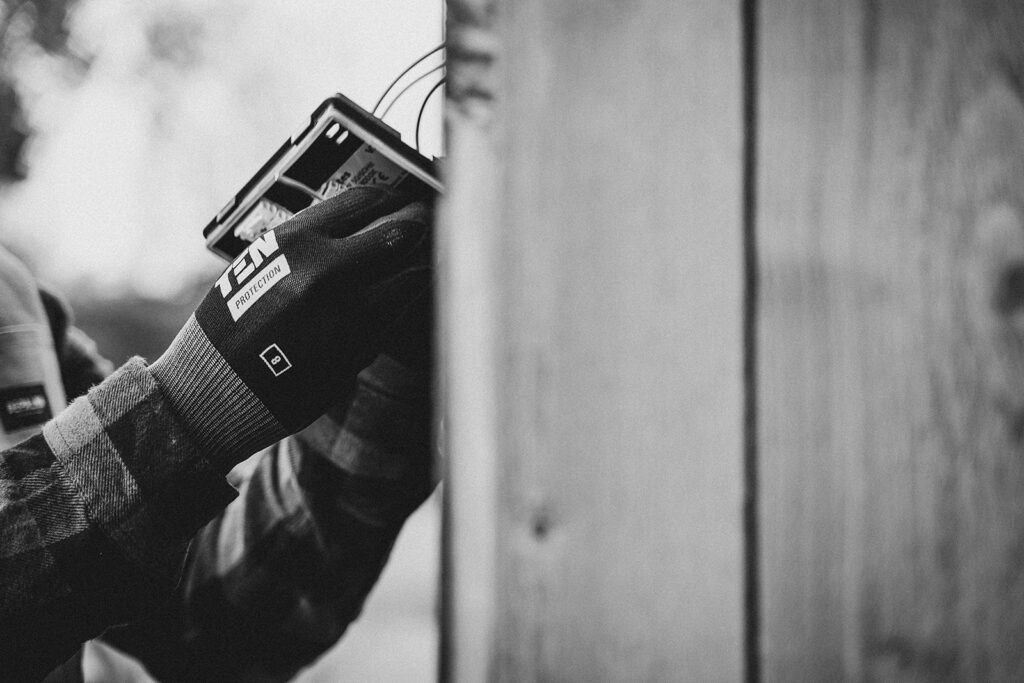What is a lockdown alarm system with spoken messages and why is it needed?
”Lockdown and evacuation alarms with spoken messages are alarm systems which are connected to loudspeaker systems which describe what to do in a given situation. Lockdown alarms may also be connected to lock and access control systems in order to prevent a perpetrator from entering, for example, a classroom or other areas of the building in which people are situated. An evacuation alarm with a spoken message, on the other hand, broadcasts an evacuation announcement,” explains Stefan Benjaminsson.
The SBF 2018:1 norm has existed since July 2017 and sets out the requirements for companies that work with evacuation alarm systems with spoken messages in accordance with SBF 502. Currently, there is no separate standard for lockdown alarms with spoken messages, but all of the functionality for a lockdown alarm system is available in systems for evacuation alarms with spoken messages.
”Demand for this type of alarm system first arose after the attack on the school in Trollhättan in 2015. We are seeing that schools built in the 1980s and 1990s do not have, or have removed, loudspeaker systems so – when alarm systems are updated or installed – there is a recognized need for a sound system which can broadcast a spoken message at the schools,” explains Stefan Benjaminsson.
”Messages can be pre-recorded or live, but there is often a preference for pre-recorded messages because they minimize the risk of sending mixed messages which might otherwise be conveyed in emergencies. In addition, a steady voice and clear message are desirable, and may be difficult to come by in the middle of a crisis situation,” says Stefan Benjaminsson.
What types of buildings inquire for this type of installation?
”To a large extent, school buildings as well as shopping centres are interested in this type of alarm system. Shopping centres already have a need for functioning speaker systems for background music and various types of announcements, which makes them cost-efficient venues for the installation of combination solutions,” explains Stephan, “but we also recognize that, for example, hotels are interested specifically in evacuation alarms with spoken messages.”
”It is usually municipal and other public buildings in addition to schools that might be confronted with a threat that are specifically interested in the installation of lockdown alarm systems. One challenge which comes up in public settings is the fact that it is difficult to train for a lockdown due to the constant influx of new persons,” explains Henrik Carlsson.
Are we talking about entirely new systems, or can a lockdown alarm system be connected to an existing system? If so, do you have any examples of how it might be set up?
”We have set up both and, while it is possible to connect to an existing system, it is recommended that a new system with a spoken message be installed in which all parts of the system are electronically monitored. The advantage of this is that an error message is generated if any part of the system malfunctions such as, for example, in the event a cable is cut or a loudspeaker stops working for some reason. An old system is much more difficult to troubleshoot and detect defects in, so we always recommend a modern and monitored system – not to make a sale – but because it is more secure,” explains Stefan Benjaminsson.
”We performed a major installation at an upper secondary school where we connected new speakers to the existing system. The existing technology was sufficiently new that we had no problems, but it was challenging to connect speakers, fire alarms, lockdown/evacuation alarm systems, access control systems and locks. When the lockdown alarm is triggered, various sections of the school are locked, and each section must have access to an emergency exit. We also provided assistance in properly coding the alarm so that SOS Alarm immediately receives information that, for example, a lockdown alarm has been triggered since it requires an entirely different response than a fire,” explains Henrik Carlsson.
Do you have any tips for people involved in the procurement of this type of installation?
”Naturally. Before you decide on a lockdown alarm system, it is a good idea to analyse the building and how it can be compartmentalized. Try to find a solution which allows re-use of existing technology in order to avoid the need to buy an entirely new system. Also, be sure to install open communications software so that you are not restricted to one individual provider, especially if you are municipal entity and are required to comply with the Swedish Public Procurement Act,” recommends Henrik Carlsson.
”Consider the types of situations in which you use loudspeakers and how you can benefit from synergies by connecting different components to one and the same system. For example, we worked with a school that wanted a system for announcements and break signals in one part and lockdown/evacuation alarms in another. When we examined the needs, it became clear to us that the cost for the installation of an evacuation alarm with spoken messages was marginally higher, so they got, for example, speakers with fire resistant cabling throughout the entire school. So, it is good to consider early on how different systems can be connected together and thereby benefit from synergy effects,” says Stefan Benjaminsson.
”Also, be sure to insist on using skilled providers which are real installation firms so that installation is not carried out by ”John Johnson’s locksmith shop on the corner”. Remember that you get what you pay for. Another super important consideration is to have a documentation requirement as early as during the procurement stage. The documentation will be incredibly important if another firm is involved and has to sort out a problem; if the documentation is missing, the new firm will need to start over from the beginning, and this gets expensive. And, when the installation is complete, remember to practice drills so that everyone knows what is expected in the event of an emergency,” concludes Henrik Carlsson.
Click here to find certified installers for evacuation alarm with spoken message >


